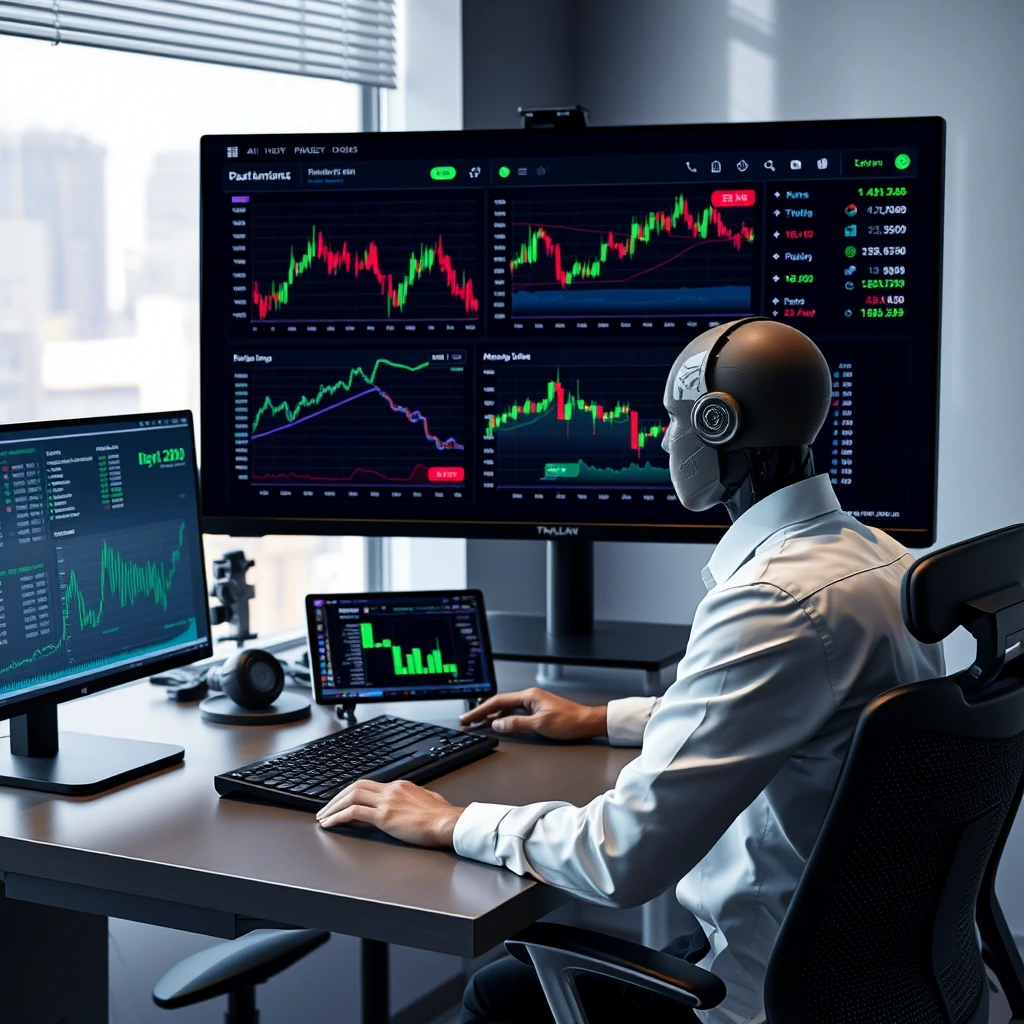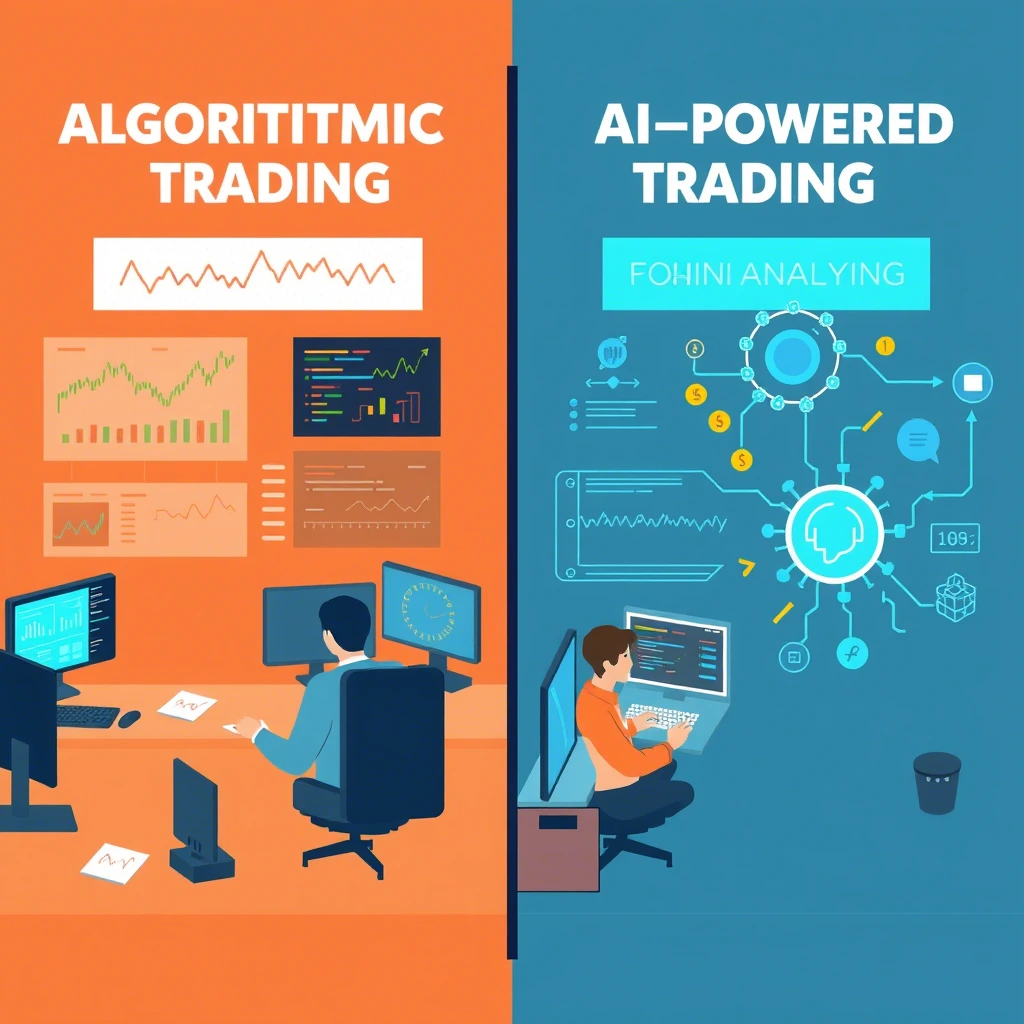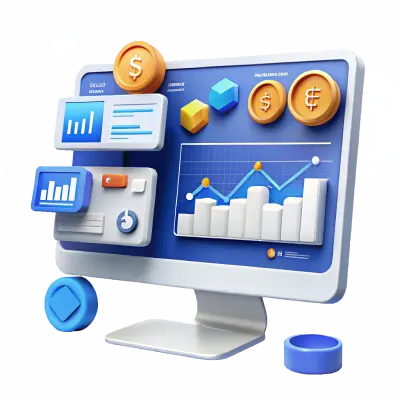AI Crypto Trading: Complete Guide to Smart Trading Strategies

AI crypto trading: a complete guide to smart trading strategies
Imagine that you have the opportunity to analyze thousands of signals according to financial markets in milliseconds, making profitable deals including at the moment of sleep. Add to this cryptocurrencies, in which place volatility gives you the opportunity to earn much more, compared to traditional markets - in this case you can make a fortune.
Just such opportunities gives today artificial intelligence in crypto trading: together with its help is made rapid as well as clear study of absolutely all incoming signals, which makes it possible to make weighty trading decisions, and operations, according to the desire of the trader, have all chances to appear automatically.
About AI trading in cryptocurrencies is discussed in this article: what is this kind of similar, as well as how it works, what are the pros and cons of this type of trading.
Understanding AI trading in cryptocurrency markets

What is AI trading
Crypto trading with the use of synthetic intelligence is a sophisticated approach to trading digital assets that uses machine learning models and neural networks to analyze bazaar data, identify patterns and automatically conclude trades. Unlike simple automated systems, trading platforms with AI have all the chances to learn from historical data, adapt to changing market circumstances and improve their own work together with the movement of the period.
Main technologies used in AI-trading
According to their nature, crypto trading systems with artificial intelligence process several data sources simultaneously, including:
-
Historical price movements and trading volumes;
-
Social media sentiment and news on online resources;
-
Onchain metrics such as wallet activity and transaction counts;
-
Order books and liquidity data;
-
Macroeconomic indicators.
These systems use a variety of synthetic intelligence techniques, from deep learning to natural language processing, to draw important conclusions from large amounts of data. AI models are ready to recognize complex patterns that individuals may not notice, as well as to make predictions about upcoming trading movements with increasing fidelity as more data is processed.
Main pros and cons
Since AI is still in the development stage, you need to clearly understand the pros and cons of using this technology in crypto trading.
Pros
-
It can analyze a huge amount of information in the shortest possible time, which is beyond human power, revealing subtle relationships and patterns;
-
AI can adapt to changing market conditions in real time. This is especially in demand in crypto trading, where the value of an asset can change by tens of percent during the day;
-
One of the biggest advantages of AI trading is its ability to execute trades without emotional bias. While traders may panic during market downturns or succumb to FOMO, the AI system sticks to the strategies laid down;
-
24/7 market monitoring mode;
-
AI can implement sophisticated risk management strategies by monitoring multiple risk factors simultaneously and modifying positions accordingly. They can quickly identify potential threats and take protective measures before significant losses occur.
Cons
-
AI will only be effective if the data it learns from is also effective. This is the problem with AI cryptocurrency trading specifically: the quantity and quality of data is not constant, and the historical data is not large enough to analyze the market in hindsight;
-
AI trading will not be mastered by everyone, due to technical complexity. It will require either a large amount of money to hire experts in this industry, or a long study of all the necessary information on your own;
-
In some neural networks there is such a notion as a black box: when studying the questions in depth, AI is not always able to explain how it came to this or that conclusion, which is not quite suitable for building a trading strategy;
-
As in any technology, when customizing AI for trading, failures are possible, which can lead to big losses.
Algorithmic trading vs AI-trading
Traders, who are somewhat familiar with trading automation systems, may have a question: what is the difference between AI trading and algorithmic trading?
At first glance, it may seem that there are no differences, and also at that time why pay more for setting up a neural network? But in fact - the two approaches are fundamentally different in their capabilities and approach.
Algorithmic trading is a type of trading on the forex market, in the process of which one huge order is divided into many small ones, with the support of special algorithms of division. The price characteristics of any order are processed, and after that it is sent for execution. The main purpose of this method is to execute orders.
Key differences
Algorithmic bots trade according to pre-specified parameters: for example, the bot should buy if the price falls by 5%, or based on the indicators of certain technical indicators. The main thing here is that algorithmic bots do not adjust to the market in any way, but follow clearly defined rules.
As for AI trading, here the system adjusts to the market - it allows:
-
Make adjustments to trading strategies in dynamics;
-
When trading is successful or unsuccessful, the neural network learns a lesson from its own actions;
-
Identify new trends in the market, without updating tasks by the trader;
-
Processing of any data that appears in the network.

In essence, algorithmic trading can be compared to a precise calculator: the bot will only follow precise instructions without trying to update the trader's strategy in any way. On the contrary, the AI system will regularly adapt to changing market conditions.
Usage scenarios
If we are talking about cryptocurrency trading, it is more profitable to use AI than algorithmic bots. Under the circumstance of significant volatility and the impossibility of changing the trading strategy in the process of trading, algorithmic bots will show the lowest efficiency, or even give losses, compared to AI.
But if we look at other markets, for example, gold, then an algorithmic bot is quite suitable. It is clear that AI trading will still become more efficient, but in traditional markets the algorithmic method is also not bad, and its customization is much cheaper.
Applications of AI in trading
Artificial intelligence in trading has many applications, thanks to which a trader can minimize his involvement in the process.
Market analysis and forecasting
As mentioned above, AI is capable of analyzing a large body of information, namely:
-
Recognizing patterns on charts, thanks to a deep learning model that allows it to identify complex technical patterns that go beyond traditional indicators;
-
Analyze social media sentiment, news articles and discussions on forums or social networks, to identify market sentiment and predict potential price impact;
-
Analyzing onchain data to detect large movements in cryptocurrencies and adapt trading strategies based on this.
Portfolio management
This means rebalancing and diversification of the portfolio if the need arises:
-
Dynamic rebalancing of the portfolio, e.g. at times of high volatility in the market;
-
Continuous portfolio monitoring and regular, scheduled rebalancing of assets;
-
Finding options for diversification between cryptocurrencies and different trading pairs.
Trade execution
One of the main qualities of neural networks, for which they began to be used in trading, is full automation of trading:
-
Monitoring of stock exchanges for the presence of an optimal price, with the subsequent opening of a position;
-
Due to the automated process of the whole trading process the time of operation execution is reduced, due to which it is possible to avoid price slippage and increase the efficiency of order execution;
-
Depending on the market volatility, AI can change the size of positions, thus adjusting the trading strategy;
-
Search for arbitrage deals between different platforms, in different trading pairs.
Risk management
By fully analyzing the market situation, AI is able to be responsible for risk management, namely:
-
Adjusting already open and future positions depending on the increasing “tension” in the market;
-
Detecting various patterns and factors that may increase the risk of trading in the near term;
-
Automatic implementation or adjustment of stop-loss orders to minimize losses;
-
Detection of fraudulent schemes in the market (e.g. Pump & Dump), after which trading operations on this asset will be canceled.
Strategy development and backtesting
AI can be used to develop a trading strategy, test it and use it in trading:
-
Automated strategy creation and optimization;
-
Advanced backtesting that takes into account realistic market conditions;
-
Strategy adaptation to changing market conditions;
-
Performance analysis and strategy refinement.
Integration approaches
Integrating artificial intelligence into crypto trading can happen in several ways:
-
By using platforms that allow the use of AI-enabled tools;
-
If the direction of trading is specific (futures trading, metals and so on), then custom development will be required: ready-made tools on platforms may not be suitable;
-
Often traders do not use AI in all operations, but only in part of them, thus combining machine and human approach;
-
It is also possible to combine AI models so that each system is responsible for a different aspect of trading.
The essence of successful AI trading lies in the right combination of available tools and approaches: they must match trading objectives, technical knowledge and resources.
Tools, methods and software for AI trading

Trading platforms with artificial intelligence integration
-
TradingView. Artificial intelligence-based technical analysis tools and pattern recognition capabilities;
-
Bitsgap. AI-based trading assistant offering optimized strategies based on users' preferences in terms of risk, balance and preferred exchanges;
-
Tickeron. Provides AI-based trading signals and pattern detection;
-
Capitalise.ai. Natural language processing for creating trading strategies.
Data analysis tools
-
Glassnode. Onchain analytics, tracking key network metrics, analyzing wallet behavior and identifying market trends through blockchain activity. Metrics such as realized value and MVRV ratio;
-
Santiment. Analyzing market sentiment through AI, processing data from social media, development information and data from blockchain;
-
LunarCrush. Social media sentiment analysis using machine learning, Galaxy Score and Alt Rank metrics;
-
IntoTheBlock. Machine learning based market signals, trading volume profiling and price correlation metrics;
-
AutoChartist. Automatic pattern recognition, support and resistance levels, potential breakout opportunities on different timeframes;
-
Bookmap. Analysis of order flows using AI, visualization of order stack depth and liquidity flows in real time;
-
TrendSpider. Automation of technical analysis, automatic detection of support and resistance levels, complex graphical models.
Frameworks and libraries for development
-
TensorFlow. A platform for creating neural networks, especially effective for time series analysis and natural language processing;
-
PyTorch. A framework for rapid prototyping of trading models;
-
Scikit-learn. Implementation of classical machine learning algorithms, data preprocessing, cross-validation and model estimation;
-
Pandas TA. Comprehensive technical analysis capabilities for Python, more than 130 indicators for analyzing cryptocurrency market data;
-
CCXT. Library for integrating cryptocurrency exchanges, single API for access to multiple exchanges;
-
Freqtrade. Development of automated trading bots, combining algorithmic approaches with machine learning capabilities;
-
TensorTrade. Creation of trading bots based on reinforcement learning, flexible environment for handling complex market scenarios;
-
PyAlgoTrade. Library for backtesting and real trading, event-driven architecture;
-
Backtrader. Platform for backtesting and strategy development, support for custom indicators and multiple data streams;
-
AI4Finance. Implementation of financial market-oriented learning algorithms.
Technical methods of implementation
-
LSTM. Price forecasting based on time series analysis, ability to remember important patterns;
-
CNN. Recognizing visual patterns on price charts and technical indicators;
-
Random Forests. Classification of market modes, reliable and interpretable results;
-
SVM. Trend forecasting, separating different market states;
-
NLP. Analyzing market sentiment through news and social media;
-
Time series analysis. Statistical AI methods to identify trends, seasonal patterns and cycles;
-
Ensemble methods. Combining multiple AI models to diversify and minimize drawbacks.
Risk management tools
-
Messari. Professional analysis of cryptocurrencies, screening projects based on fundamental indicators;
-
CryptoQuant. Institutional analytics, analysis of blockchain data to identify wallet movements and miner behavior;
-
Coinmetrics. Detailed analysis of network health, market structure and asset behavior;
-
Chainalysis. Transaction monitoring and risk assessment, analyzing blockchain using machine learning;
-
Crystal Intelligence. Visualization and analysis of complex transaction patterns, address and transaction security assessment.
The future of AI trading
Based on the conditions in March 2025, AI trading will continue to evolve. Today there are no any limited facets that would prevent this, rather the opposite: neural networks continue to improve rapidly, spending billions of dollars each time.
Together with this arrangement it is absolutely possible that in the not too distant near future AI trading on the forex market will be available to a much larger circle of people, but not the “elite” of the trade that is able to give the opportunity for themselves expensive programs as well as customization.
Together with another edge, in case this happens, AI trading will cease to be something special, and bazaars have all chances to adapt to it, in connection with together with compared to and also its usefulness may decrease.
Conclusion
AI trading in cryptocurrencies implies an innovative aspect to the trading of numerical assets, allowing to explore large amounts of information, adapt to trading changes and also automate operations in the absence of psychological conditions. This makes trading more efficient as well as accurate, but it also involves some risks as well as technical complexities.
Although AI in trading offers significant advantages, such as faster analysis, 24/7 monitoring and automation of trading strategies, some will require quality data, competent options and an understanding of the basics of its operation. In the future, along with the formation of technology, AI trading may become more accessible and widespread, but its impact on the market is yet to be assessed.
FAQ
How much capital do I need to start AI-trading in cryptocurrency markets?
The initial capital depends on the chosen strategy, platform and the degree of automation. Some platforms allow you to start with small amounts of money ($100-$500), but for the purpose of professional trading with a quality AI-bot, you may need much more - several thousand dollars.
Can AI trading completely replace human traders?
AI trading cannot completely change the faces of human traders yet. Despite the fact that it outperforms humans in reviewing information and quickly reaching conclusions, the human factor remains important for strategic planning, adapting to unusual situations, and managing risk
What are the main risks associated with AI trading systems?
The main risks include linkage to data features, technical failures, unpredictable market events and likely algorithm errors. There is also the risk of capital loss due to incorrect options or excessive automation without trader control.
Want to learn more about crypto arbitrage?
Get a subscription and access the best tool on the market for arbitrage on Spot, Futures, CEX, and DEX exchanges.




